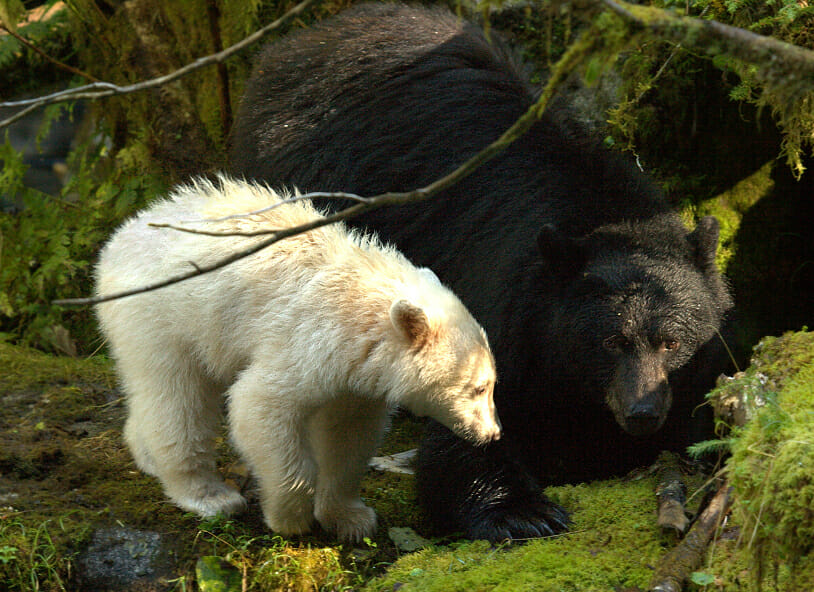Estimated Reading time

2 Mins
B.C. Bears’ Salmon Hotspots Leave Clues For Indigenous Resource Managers and Researchers

A new study in the peer-reviewed open-access journal Ecosphere deepens our understanding of the connections between salmon and bear populations.
Using a chemical technique known as stable isotope analysis, researchers examined samples of hair left by more than 1,400 grizzly and black bears from 1995 to 2014 at the places they feed on salmon in more than 690,000 square kilometers of B.C. The analysis revealed that grizzly bears access salmon well beyond coastal areas—up to 1,000 km into interior habitats—and consume much more salmon than black bears across their habitats. They also found that black bears’ diets varied from near-vegetarian to salmon-focused, and that males of both species consume far more salmon than their female counterparts.
For lead researcher Megan Adams, the results demonstrate important connections between land and sea over huge landscapes. “Fisheries and land-use management would benefit from integrating beyond discrete geo-political jurisdictions to take ecosystem processes into account and consider habitat protections beyond existing boundaries,” says Adams.
Danielle Shaw, stewardship director for the Wuikinuxv Nation, is part of the Central Coast Bear Working Group and one of the project’s collaborators. She emphasizes that the health of salmon stocks is a direct indicator of the health of an entire ecosystem. “By looking at what other species need to ensure their sustenance, we are progressing towards a more ecosystem-based approach to conservation and management,” says Shaw. “We have a responsibility to ensure all other species are fed before we fill our own bellies.”
- Read the Raincoast Conservation Foundation’s press release about this study.
- Read the new research published by Adams and collaborators in Ecosphere.
- Learn more about the Wuikinuxv Nation.
